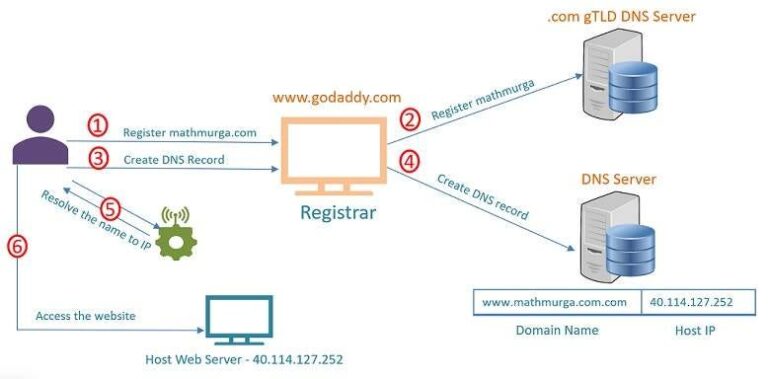The Ultimate Guide to Using a WWW Redirect Checker
Have you ever clicked a link and ended up on a different URL than you expected? That’s a redirect in action! Redirects are a common web feature, but when not managed properly, they can affect your site’s performance, SEO rankings, and even user experience. This is where a www redirect checker comes into play. But what exactly is a www redirect checker, and why is it essential? In this guide, we’ll walk you through the nuts and bolts of redirect checkers, how to use them, and why they’re crucial for every website.
What is a WWW Redirect Checker?
A www redirect checker is a tool that allows you to see how URLs on your website are redirecting. It helps ensure that users (and search engines) are sent to the correct version of a page, whether it’s the “www” or “non-www” version of your site. This is crucial for SEO and user experience, as incorrect redirects can slow down page loading, impact search engine rankings, and even cause security issues.
Why Use a WWW Redirect Checker?
Using a redirect checker is not just a best practice but a must-do for websites of all sizes. Here’s why:
- Enhances SEO: Redirect issues, like loops or broken links, can affect SEO. Fixing them can boost rankings.
- Improves User Experience: Users won’t stick around if they’re redirected to broken or irrelevant pages.
- Ensures Consistency: Whether you prefer the “www” or “non-www” version, consistency is key in search engine indexing.
Let’s dive deeper into the benefits, types of redirects, and how to check and troubleshoot them effectively.
Types of Redirects: Understanding the Basics
Before you run your website through a www redirect checker, it’s helpful to know the different types of redirects and when to use each.
1. 301 Redirect
A 301 redirect is a permanent redirect, letting search engines know that a page has permanently moved to a new location. This is usually used when consolidating multiple pages or moving from a “www” to a “non-www” domain (or vice versa).
2. 302 Redirect
Unlike the 301, a 302 redirect is temporary. It’s often used for testing or seasonal pages where you want the redirect to be temporary.
3. Meta Refresh
A meta refresh is a type of redirect executed through HTML tags rather than server settings. It’s not ideal for SEO and is rarely used on major sites due to its slow redirection time.
How to Use a WWW Redirect Checker
Ready to see your redirects in action? Follow these steps to get started:
Step 1: Choose a Reliable Redirect Checker
There are plenty of free and paid www redirect checkers available online. Some popular ones include:
- Ahrefs Redirect Checker
- Site24x7 URL Redirect Checker
- Redirect Detective
Step 2: Enter Your URL
Simply enter the URL you want to check. This could be your main domain, subdomain, or a specific page you’ve recently updated.
Step 3: Analyze the Redirect Path
The redirect checker will show you a “redirect chain”—a list of each URL change from start to finish. Look for unexpected jumps or loops, as these can signal problems.
Step 4: Address Issues
Once you’ve spotted an issue, you can fix it by:
- Updating .htaccess Files: If you’re using Apache, update the .htaccess file to set up or correct redirects.
- Modifying Server Configurations: For sites on Nginx, redirects are set up in the server’s configuration file.
- Using Plugins: WordPress users can rely on plugins like Redirection to manage redirects easily.
Best Practices for Redirect Management
Effective redirect management can improve site performance and SEO. Here are some golden rules to follow:
- Avoid Redirect Chains: Multiple redirects between pages can slow down loading time, frustrating users and search engines.
- Use Canonical Tags: Canonical tags help search engines recognize the preferred version of a page, minimizing the need for redirects.
- Limit 302 Redirects: Stick to 301 redirects whenever possible to ensure that SEO benefits are passed along to the final destination.
- Keep It Consistent: Stick to either the “www” or “non-www” format across your entire site to avoid confusion.
Common WWW Redirect Issues and Troubleshooting
Redirect issues can creep up on even the most well-maintained websites. Here’s how to tackle the most common ones.
1. Redirect Loops
Issue: Redirect loops occur when two pages keep redirecting back and forth between each other, creating an endless loop.
Solution: Use your www redirect checker to identify the loop’s origin, then remove one of the redirects.
2. Broken Redirects
Issue: If a URL in the redirect chain is removed or broken, users may end up on a 404 error page.
Solution: Update the redirect to point to a live URL or create a custom 404 page to manage the user experience.
3. Conflicting Redirects
Issue: Conflicting redirects happen when multiple rules are applied to the same URL, creating confusion.
Solution: Consolidate your redirect rules into a single file to minimize conflicts.
Frequently Asked Questions (FAQs)
1. What’s the difference between a 301 and a 302 redirect?
A 301 is a permanent redirect, while a 302 is temporary. A 301 passes SEO value, whereas a 302 doesn’t, which can impact search engine ranking.
2. Is a www redirect checker safe to use?
Yes, a reliable redirect checker from a trusted provider is safe to use and doesn’t pose any risk to your site or data.
3. Why does my site have both www and non-www versions?
This can happen if your site isn’t configured to prefer one version. Setting up a 301 redirect between the “www” and “non-www” versions can help avoid duplicate content issues.
4. Can I use a plugin for redirect management?
Absolutely! WordPress users, for instance, have plugins like Redirection or Yoast SEO that make managing redirects simple.
Conclusion
Redirects might sound technical, but they’re crucial for SEO, user experience, and security. By using a www redirect checker, you can pinpoint and address redirect issues before they hurt your site’s performance. Remember to maintain consistency, avoid unnecessary redirect chains, and troubleshoot common problems to keep your site running smoothly. With the right practices in place, you’ll be on your way to a faster, more reliable website that both users and search engines will love!






